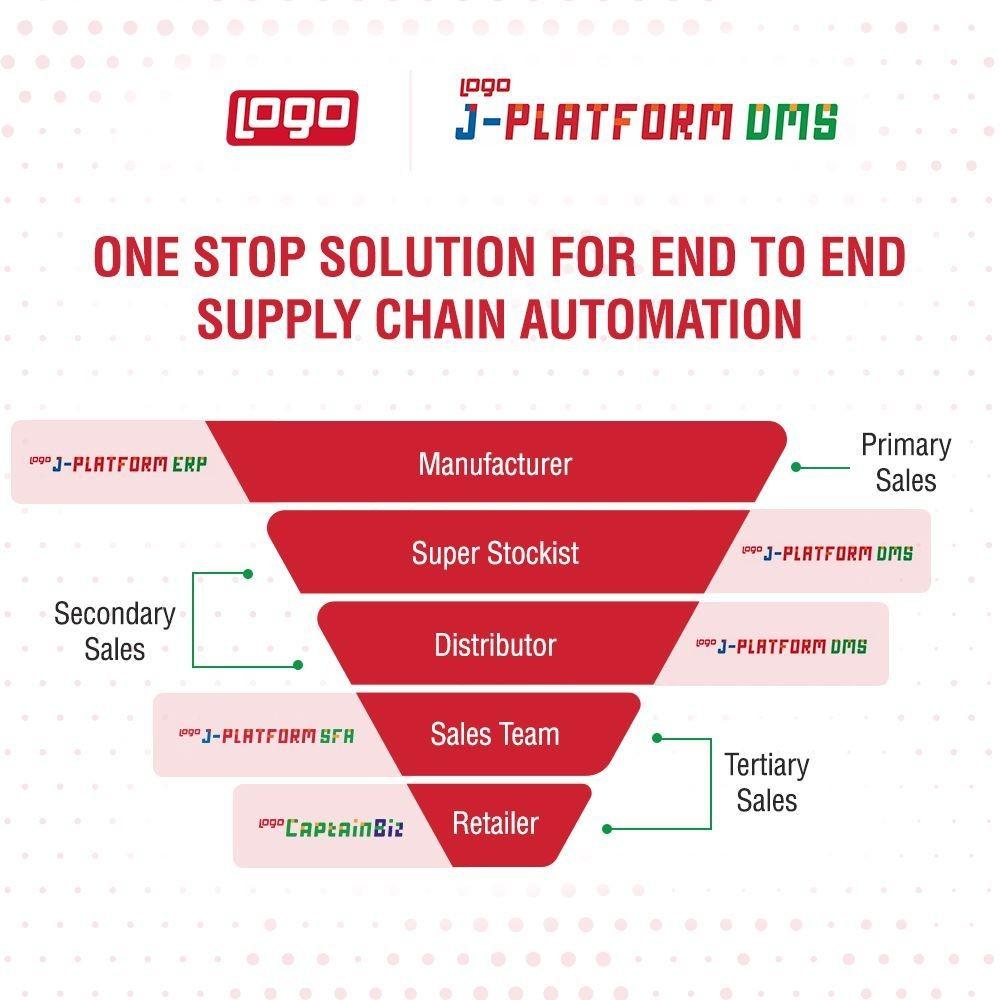Introduction to Sales Distribution Management System: Challenges and Opportunities
By J-Platform
Overview
A sales distribution management system is a software solution that helps businesses manage their sales and distribution operations more effectively.
A sales distribution management system can help businesses overcome these challenges by providing greater visibility and control over their operations, enabling them to make more informed decisions and respond more quickly to market changes.
By improving efficiency and reducing costs, a sales distribution management system can also help businesses stay competitive and profitable in today's fast-paced business environment.
While a sales distribution management system offers many benefits, there are also challenges that must be addressed in order to realize these benefits.
These challenges include integrating the system with existing systems and processes, ensuring data accuracy and integrity, and providing adequate training and support to users.
However, with proper planning and execution, these challenges can be overcome, and a sales distribution management system can help businesses achieve greater efficiency, profitability, and customer satisfaction.
Opportunities with Sales Distribution Management System
In addition to overcoming challenges, a sales distribution management system offers numerous opportunities for businesses.

By providing real-time data analysis and reporting, businesses can gain greater insights into their operations and make more informed decisions.
The system can also help businesses improve their inventory management, reduce costs, and enhance customer relationships.
With the ability to streamline the sales process, businesses can increase productivity and efficiency, which can translate into higher revenues and profitability.
Benefits of Sales Distribution Management System
Increased efficiency: By automating key sales and distribution processes, an SDMS can help organizations become more efficient, reducing the amount of time and resources required to manage these activities.
Improved accuracy: Manual processes are often prone to errors and inaccuracies, which can lead to lost sales, unhappy customers, and other problems. An SDMS can help organizations improve accuracy by automating key tasks and reducing the likelihood of human error.
Better visibility: An SDMS can provide organizations with real-time visibility into their sales and distribution activities, helping them make more informed decisions and respond more quickly to changing market conditions.
Enhanced customer experience: By streamlining the sales and distribution process, an SDMS can help organizations provide a better customer experience, from faster order fulfillment to more accurate tracking and delivery.
Improved data management: An SDMS can help organizations collect, analyze, and manage large amounts of data related to their sales and distribution activities, providing insights that can help inform business decisions and drive growth.
Key Features of Sales Distribution Management System
● Inventory Management: SDMS helps to manage the inventory of the products being sold by the company. It keeps track of the stock levels, identifies low stock, and automatically triggers purchase orders when stock falls below a certain threshold.
● Sales Management: SDMS allows sales teams to manage customer information, track orders, and manage leads and prospects. It helps to streamline the sales process, track sales performance, and improve the accuracy of sales forecasting.
● Logistics and Delivery Management: SDMS helps to manage the logistics and delivery of products. It allows companies to track the status of orders, manage shipping and delivery, and optimize delivery routes to improve efficiency and reduce costs.
● Reporting and Analytics: SDMS provides detailed reports and analytics on sales performance, inventory levels, and logistics and delivery metrics. This information can be used to identify trends, make data-driven decisions, and optimize business operations.
● Integration with other systems: SDMS can be integrated with other systems such as distribution ERP (Enterprise Resource Planning) and CRM (Customer Relationship Management) to provide a seamless end-to-end solution for businesses.
Emerging Trends in Sales Distribution Management
Omnichannel Sales: Customers today expect a seamless shopping experience across all channels, whether it's online, in-store, or through a mobile app. Omnichannel sales strategies enable organizations to provide a consistent customer experience across all touchpoints and channels.
Artificial Intelligence (AI) and Machine Learning (ML): AI and ML are increasingly being used in sales distribution management to analyze data and provide insights into customer behavior, preferences, and buying patterns. This can help organizations optimize their sales and marketing strategies and improve customer engagement.
Customer Relationship Management (CRM): CRM systems have been around for a while, but they continue to evolve with new features and capabilities. Today's CRM systems are more intuitive, easier to use, and provide more comprehensive data analytics than ever before.
E-commerce and Digital Sales: E-commerce sales have been growing steadily for years, and the pandemic has accelerated this trend. Organizations need to have a robust e-commerce strategy and digital sales capabilities to compete in today's market.
Partner Relationship Management (PRM): Partner relationships are an essential part of many sales distribution channels, especially for organizations that sell through resellers or distributors. PRM systems help organizations manage these relationships more effectively and improve partner engagement.
Subscription-Based Sales: Subscription-based sales models are becoming more popular across a range of industries, from software to media to consumer goods. These models provide a predictable revenue stream and can help organizations build longterm relationships with customers.
Overall, the key to success in sales distribution management is to stay agile and adapt to new trends and technologies as they emerge. Organizations that can effectively leverage these trends will be well-positioned to compete and grow in today's dynamic market.
Contact Us
J-Platfrom DMS
Address - Second Floor, Raghuleela Mall Arcade, Vishwaroop Infotech Pvt. Ltd.
Plot No 34, 35, 38, Next to Mc Donald’s, Vashi,NaviMumbai-400703Maharashtra,India.

Contact On- +918433733535/+919004403222
Email -sales@logoinfosoft.com



